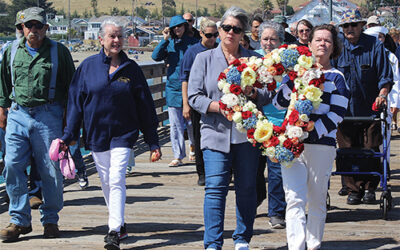Interested in being a part of future plans for vast wetlands, riparian areas, vital habitat, and ocean creatures? Survey participants are needed as part of the Interpretation Master Plan for the Hearst San Simeon State Park (HSSSP) Master Plan.
“We need to know what people value, and what kinds of interpretive materials and programs they would consider useful,” said Rouvaishyana, district interpretive planner for the San Luis Obispo Coast District, California State Parks. “The ultimate goal of such a plan is to find effective ways to engage with the public/park visitors so that they understand the natural and cultural resources of the park, what the agency is doing to protect those and how visitors can help, as well as the reasons behind park rules and regulations, especially environmental rules and laws.”
The 20-year plan is intended to provide guidance to Park staff about programs and materials that are designed to be inspirational as well as educational. Topics can include natural and cultural heritage, and recreational resources. This is the first such plan for this park,
“A General Plan was produced for the Park in 1979, covering many aspects of park operations,” said Rouvaishyana. “It contained very little about interpretation, and park staff decided that a plan on this subject area would be timely for the park, as it has been over 40 years.”
Input from teachers plays an important role built out of the relationship between CA State Parks and education.
“We want teacher input because many have brought and will bring students on educational field trips to State Parks, including this one,” Rouvaishyana said. “California State Parks is the second largest provider of public education in California, after the school system, colleges, and universities, considered collectively. For the last 15-20 years, parks have also offered interactive online programs, which are being combined with live visits in innovative ways.
“The people of California are all part owners of parklands. Of course the parks are open to visitors from other states and other countries as well. The survey is intended to get public input on important topics and messaging. These will be incorporated, to the extent feasible, along with the input of park staff.”
HSSSP is one of the oldest units of the California State Park system. The 3,409-acre park was first established in 1932 and includes the Santa Rosa Creek Natural Preserve, the San Simeon Natural Preserve and the Pa-nu Cultural Preserve. It offers both day use and camping opportunities Visitors can provide verbal and/or written input when they visit parks or anyone can take a short online survey. It can be found at bit.ly/3KFcvvZ for visitors and bit.ly/3jDNMMB for teachers.
Rouvaishyana says the Interpretation Master Plan, which is expected to be 150 to 200 pages, is slated for completion by the end of this year or the beginning of 2023, but survey results may take longer than planned in order to get enough for a representative sample. After that, the document will undergo an internal review at the District level, and reviewed by staff at State Park headquarters in Sacramento.
“After the plan is completed and reviewed, Park staff will use it to develop interpretive programs, displays, brochures, etc. for visitors to use,” Rouvaishyana said. “If significant new ideas come forward, they can be incorporated as well.”
San Simeon State Park is located 35 miles north of San Luis Obispo on Highway 1, and 5 miles south of the Hearst San Simeon State Historical Monument Visitor Center. This park does not include Hearst Castle, but is the coastal strip from the north end of Cambria to San Carpoforo Creek on the way to Ragged Point. It attracts 360,000 to 500,000 visitors per year.


